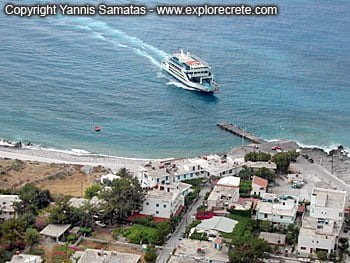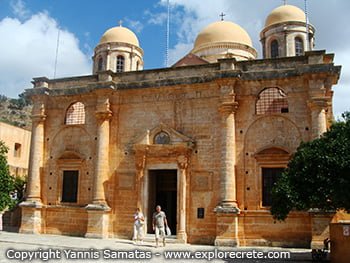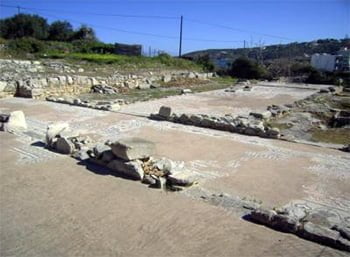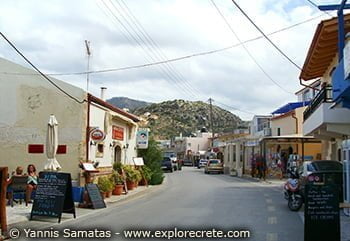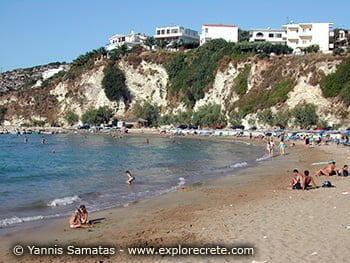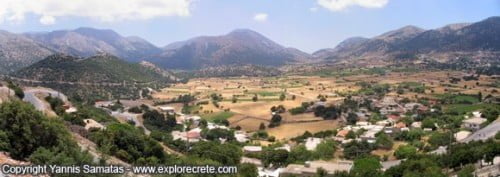Lissos, the ancient city near Sougia
Lissos
Lissos is an ancient city whose ruins are preserved between Paleochora (west) and Sougia (east), on the south coast of Chania Prefecture.
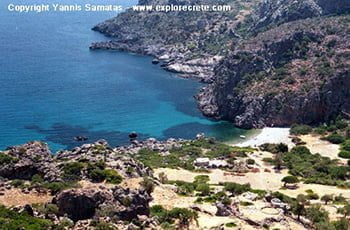
Lissos was a harbour of the Dorian city of Elyros, near the modern-day village of Rodovani. Both Elyros and its two harbours, Sougia and Lissos, flourished in the Hellenistic, Roman and First Byzantine periods, and were destroyed by the Saracen Arabs who arrived in large numbers from Spain.
It is said that, at its, peak, Elyros had 30,000 inhabitants. It also minted its own coinage, as did Lissos. The Lissos coin depicted the head of the goddess Artemis on one side and a dolphin on the reverse.
The Temple of Asklepios in Lissos
In antiquity, Lissos was known for its famous Temple of Asklepios (Aesculapium), where people came from all over Crete to be cured by the local waters. The temple was destroyed in a great earthquake, but its mosaic floor depicting animals and geometrical patterns is preserved.
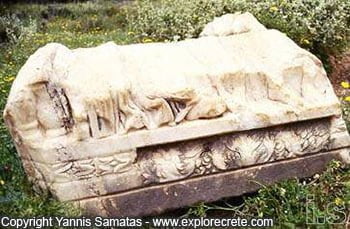
The Temple of Asklepios is open in the morning for you to admire, but don’t stop there. Continue your walk in the valley of Lissos, and you will discover column capitals hidden in the bushes and the Roman cemetery with its chamber tombs (they look like little houses).
At Lissos were found famous statues of Asklepios, the goddess Hygeia and Pluto, now on display at Chania Archaeological Museum, along with the rest of the 20 statues discovered here by chance in 1957, by a shepherd in search of water for his flock. In no other city on Crete have so many statues been found, except for Gortys, the capital of Crete under Roman rule.
The excavations at Lissos have not yet been completed and more treasures are surely still hidden here, as the city flourished from the Hellenistic to the First Byzantine period, with its own theatre and spa baths. During the First Byzantine period Lissos was even a bishop’s seat, so it was obviously a thriving city.
The beach at Lissos
Lissos has its own beach with big pebbles, but it’s nothing like as good as the large beach at Sougia.
The feast day of St Kirikos
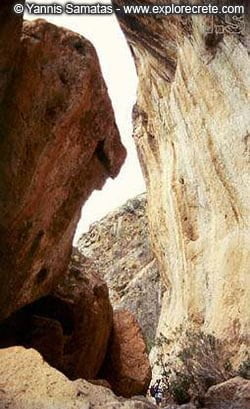
At Lissos there is a little church dedicated to Agios Kirikos (St Kirikos), whose feast-day is on 15 June.
On the previous evening, worshippers arrive here either along the path or by boat from Sougia, stay overnight, attend the service and enjoy the festival that follows.
St Kirikos was put to death at just three years of age together with his mother St Julitta, by the ruler of the city of Tarsus in Asia Minor, during the great persecutions of the Christians under the Roman Emperor Diocletian.
How to get to Lissos
There are two ways of getting to Lissos:
By boat from Sougia, a pleasant 20-minute sea trip.
On foot, which will take you about 1.5 – 2 hours. It’s not a difficult walk, but it’s much more tiring than going by sea.
Walking to Lissos. The path starts at the little harbour of Sougia. From here you enter a small gorge, and half an hour later you start climbing the slope, which will bring you to a hill above Sougia.
Continue along the path and you’ll soon see Lissos below you. Visit the Temple of Asklepios, explore the valley and return to Sougia either by the same path or by boat, a much more relaxing choice.
© explorecrete.com All Rights Reserved. Reproduction or copying without permission is prohibited.

